
Kampot: The Enchanting Riverside Gem of Cambodia
Discover Kampot Province: A fusion of colonial charm, natural beauty, and world-famous pepper in the heart of Cambodia.
Kampot Province, nestled along the serene banks of the Prek Kampot River, is a hidden gem in Cambodia. Known for its lush landscapes, colonial architecture, and laid-back atmosphere, Kampot offers a unique blend of natural beauty and historical charm. As you wander through the quaint streets of Kampot town, you'll be captivated by the well-preserved French colonial buildings that tell stories of a bygone era. Nature enthusiasts will find a haven in Kampot with its proximity to the stunning Bokor National Park. The park, home to the iconic Bokor Hill Station, offers breathtaking views, misty mountains, and diverse wildlife. Whether you're hiking up to the old French casino or exploring the ancient temples, the sense of adventure is palpable. Don't miss the Popokvil Waterfalls, where you can cool off and enjoy a picnic amidst the serene surroundings. Kampot is also famous for its pepper, renowned as some of the best in the world. A visit to a pepper plantation is a must, where you can learn about the cultivation process and sample the aromatic spices. The town's riverside location makes it perfect for leisurely boat trips, especially at sunset, when the sky paints a magnificent picture over the water. The local markets and eateries offer a delightful array of Khmer cuisine, ensuring that your taste buds are as satisfied as your soul.
Local tips in Kampot Province
- Visit Kampot during the dry season (November to April) for the best weather conditions.
- Rent a bicycle or scooter to explore the town and surrounding countryside at your own pace.
- Try the local specialty, Fish Amok, at one of the riverside restaurants.
- Bring a light jacket if planning a trip to Bokor Hill Station, as it can get chilly.
- Don't forget to bargain at the local markets for the best deals on souvenirs and spices.
Kampot: The Enchanting Riverside Gem of Cambodia
Kampot Province, nestled along the serene banks of the Prek Kampot River, is a hidden gem in Cambodia. Known for its lush landscapes, colonial architecture, and laid-back atmosphere, Kampot offers a unique blend of natural beauty and historical charm. As you wander through the quaint streets of Kampot town, you'll be captivated by the well-preserved French colonial buildings that tell stories of a bygone era. Nature enthusiasts will find a haven in Kampot with its proximity to the stunning Bokor National Park. The park, home to the iconic Bokor Hill Station, offers breathtaking views, misty mountains, and diverse wildlife. Whether you're hiking up to the old French casino or exploring the ancient temples, the sense of adventure is palpable. Don't miss the Popokvil Waterfalls, where you can cool off and enjoy a picnic amidst the serene surroundings. Kampot is also famous for its pepper, renowned as some of the best in the world. A visit to a pepper plantation is a must, where you can learn about the cultivation process and sample the aromatic spices. The town's riverside location makes it perfect for leisurely boat trips, especially at sunset, when the sky paints a magnificent picture over the water. The local markets and eateries offer a delightful array of Khmer cuisine, ensuring that your taste buds are as satisfied as your soul.
When is the best time to go to Kampot Province?
Iconic landmarks you can’t miss
Bokor Hill Station
Discover the enchanting ruins and breathtaking views at Bokor Hill Station, a historical gem nestled in Cambodia's picturesque landscapes.

Preah Monivong Bokor National Park
Discover the breathtaking landscapes and rich history of Preah Monivong Bokor National Park in Cambodia, perfect for nature lovers and adventure seekers.
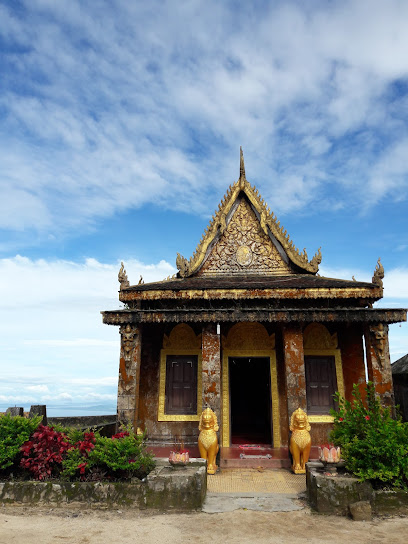
La Plantation
Explore La Plantation in Krong Kampot: An organic farm experience with farm-to-table dining, local Asian products, and serene accommodations.

Daung TE Kampot
Experience the tranquility and natural beauty of Daung TE Kampot, a serene resort hotel nestled in the heart of Cambodia's picturesque landscapes.
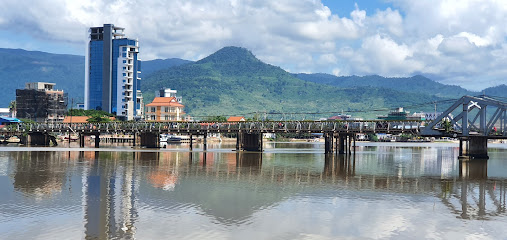
Popokvil Waterfall
Experience the breathtaking beauty and tranquility of Popokvil Waterfall, a scenic oasis in Cambodia perfect for nature lovers and adventure seekers.
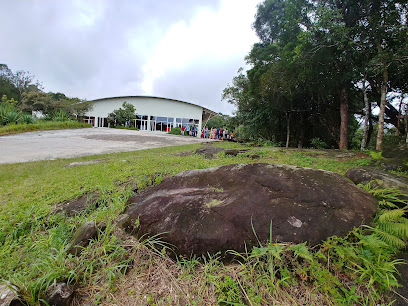
Kampot Night Market
Explore the vibrant Kampot Night Market for authentic Cambodian flavors, local crafts, and a lively cultural experience in the heart of Kampot.

Entanou Slide River Park
Experience adventure and relaxation at Entanou Slide River Park in Kampot, Cambodia - a thrilling destination for families and nature lovers.
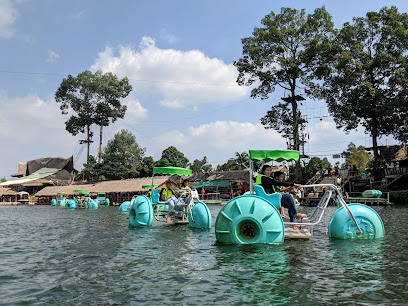
Wat Sampov Pram
Experience spiritual tranquility and stunning views at Wat Sampov Pram, a beautiful Buddhist temple nestled in the heart of Cambodia’s Bokor Mountain.
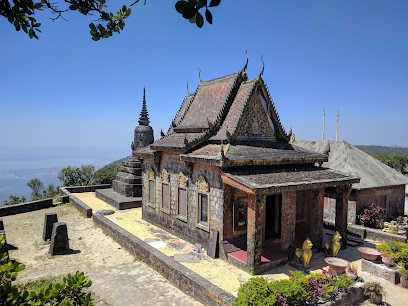
Yellow Sun Hostel Kampot
Discover the vibrant atmosphere of Yellow Sun Hostel in Kampot, a perfect blend of comfort, community, and local culture.
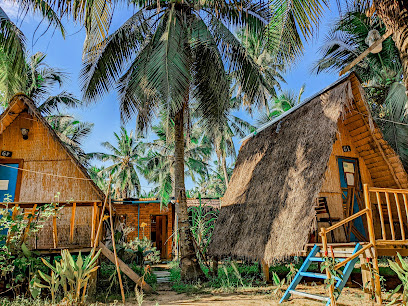
Sothy's Pepper Farm
Explore the essence of Kampot at Sothy's Pepper Farm, where organic farming meets authentic Cambodian flavors and rich cultural heritage.
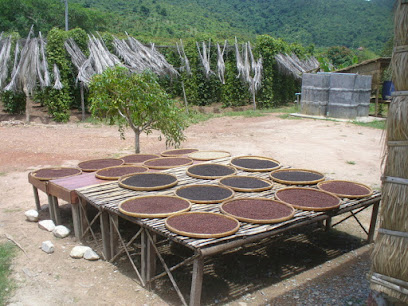
Mad Monkey Hostel Kampot
Discover the ultimate travel experience at Mad Monkey Hostel Kampot, where adventure meets relaxation in the heart of Cambodia's coastal charm.

Karma Traders Kampot
Experience the heart of Kampot at Karma Traders, where comfort meets community in a stunning Cambodian landscape.
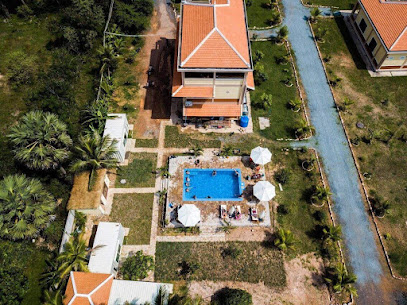
Sabay Beach
Discover the tranquility of Sabay Beach, a serene hotel in Krong Kampot, Cambodia, offering stunning river views and cozy accommodations.

Kampong Trach Mountain Park
Explore the untouched beauty of Kampong Trach Mountain Park, a serene national park in Cambodia, perfect for nature lovers and adventurers alike.
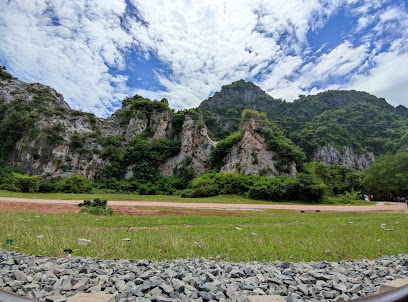
Rusty Keyhole
Discover the flavors of Cambodia at Rusty Keyhole, a beloved restaurant in Krong Kampot known for its BBQ specialties and warm atmosphere.
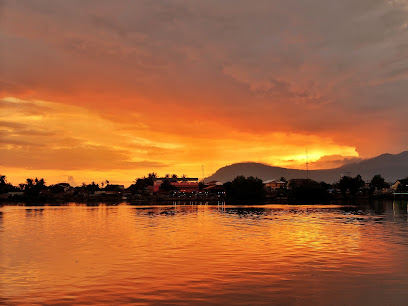
Unmissable attractions to see
Wat Sampov Pram
Discover the serenity of Wat Sampov Pram, a stunning Buddhist temple in Cambodia offering rich cultural insights and breathtaking views.
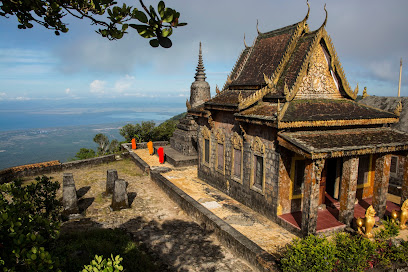
Teuk Chhou Rapids
Discover the enchanting Teuk Chhou Rapids, where adventure meets tranquility in the heart of Cambodia's stunning landscapes.

Beetle Waterfall
Experience the serene beauty of Beetle Waterfall in Krong Kampot, a hidden gem surrounded by lush nature and vibrant wildlife.
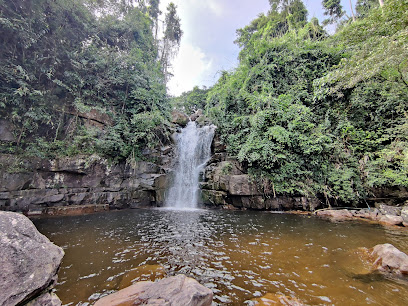
New Kampot Roundabout
Discover the charm of New Kampot Roundabout, a vibrant hub showcasing the essence of Cambodian culture and local life, perfect for every traveler.
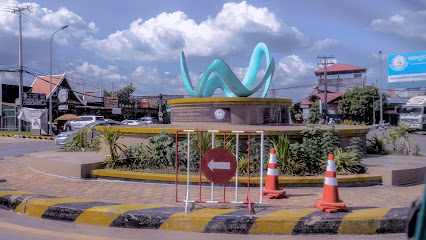
Lotus Pond
Experience the tranquil beauty of Lotus Pond in Krong Kampot, a serene park perfect for relaxation, picnics, and enjoying nature's vibrant blossoms.
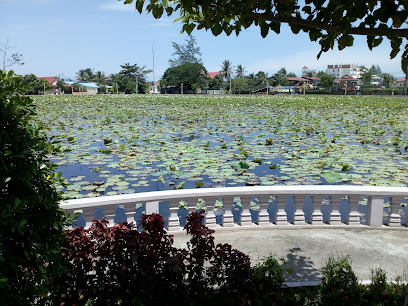
Wat Traeuy Kaoh
Discover the tranquil beauty and spiritual essence of Wat Traeuy Kaoh, a serene Buddhist temple in Krong Kampot, Cambodia.
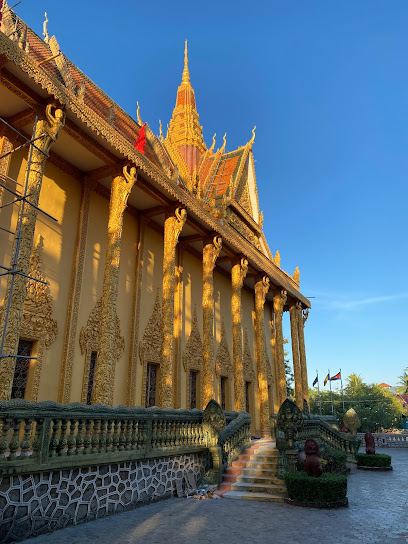
Durian Roundabout
Explore the vibrant Durian Roundabout in Kampot, a unique landmark showcasing local culture and bustling street life.
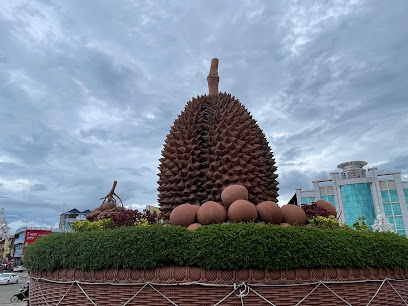
ផ្លូវថ្មីកាត់ទៅកែប
Discover the breathtaking riverside of Kampot, a tourist attraction rich in culture, history, and stunning natural beauty, perfect for every traveler.
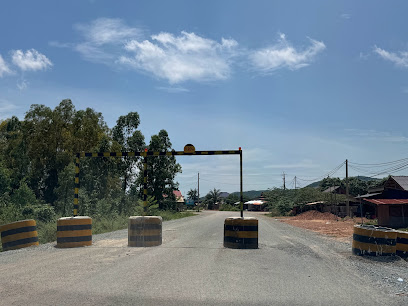
Anlung Pring Community-led Ecotourism
Explore Anlung Pring, a community-led ecotourism haven in Cambodia, rich in biodiversity and local culture for an unforgettable adventure.
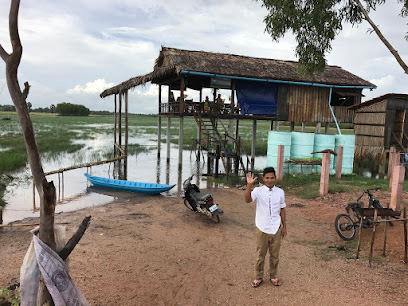
King Ang Duong statue; 1796-1860
Explore the King Ang Duong Statue in Krong Kampot: A captivating tribute to Cambodian heritage and history.
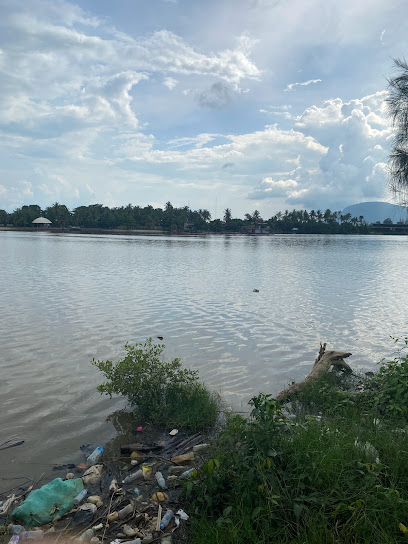
Heaven Gate
Discover the breathtaking beauty of Heaven Gate in Cambodia, where stunning landscapes and tranquil surroundings await your exploration.
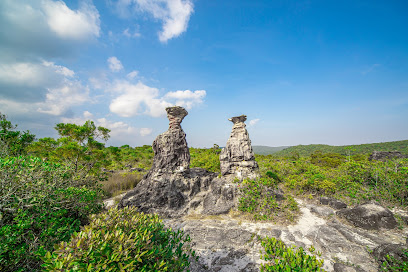
View point
Discover breathtaking views of lush landscapes and the serene Kampot River at this stunning viewpoint, a must-visit for nature lovers in Cambodia.
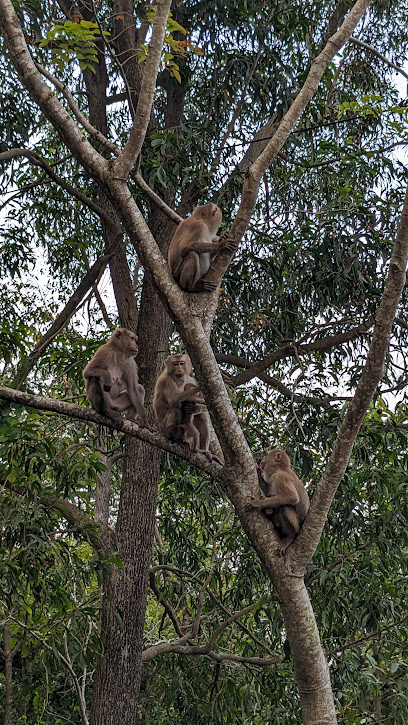
រូបសំណាកសេះសមុទ្រខេត្តកំពត ប្រទេសកម្ពុជា
Explore Kampot: A serene Cambodian town offering rich culture, breathtaking nature, and delightful culinary experiences, perfect for every traveler.
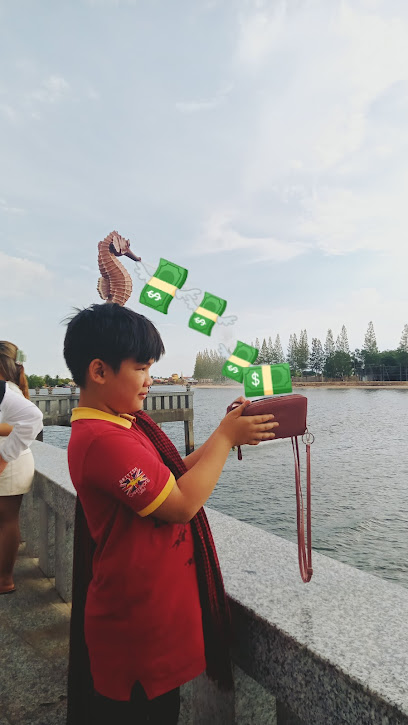
The most beautiful bays in the world
Explore the serene beauty of the world's most beautiful bays in Krong Kampot, Cambodia, where nature and tranquility meet for an unforgettable escape.
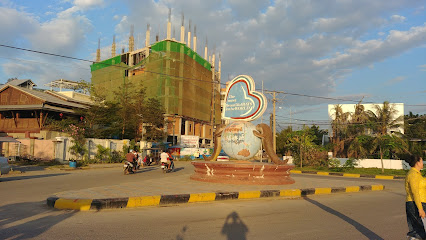
The best sunset landscape
Experience the breathtaking sunsets at Krong Kampot's best landscape, a serene escape into nature's vibrant beauty.
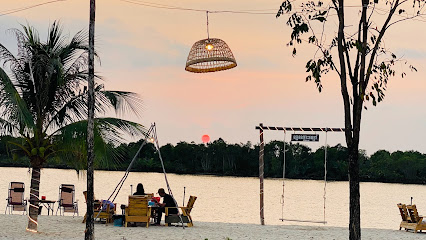
Essential places to dine
Aroma House
Discover authentic Mediterranean and Middle Eastern flavors at Aroma House in Kampot - where delicious cuisine meets warm hospitality.
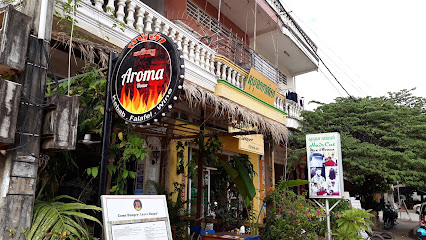
Simple Things
Discover Simple Things: A charming vegetarian restaurant in Kampot offering delicious meals, artisanal coffee, yoga sessions, and a tranquil atmosphere.
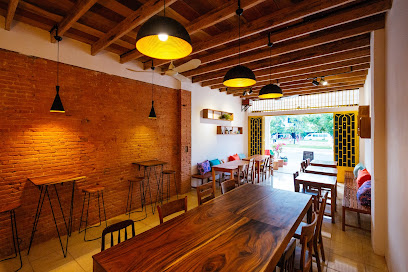
Lemongrass Bistro
Experience authentic Thai cuisine at Lemongrass Bistro in Krong Kampot – where flavor meets tradition in a cozy atmosphere.
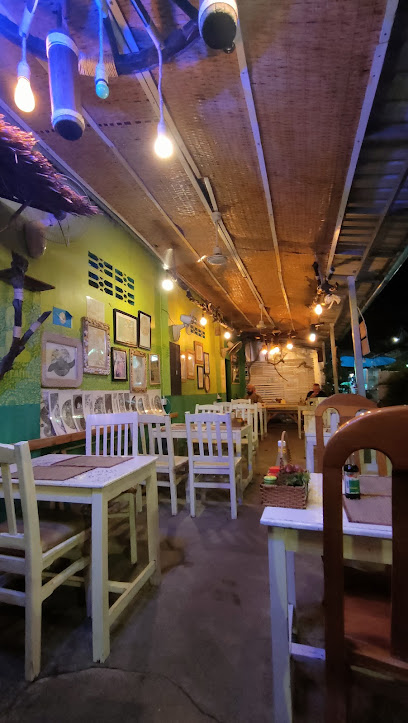
L’Osteria in Kampot
Experience authentic Italian cuisine at L’Osteria in Kampot - where fresh ingredients meet traditional recipes.
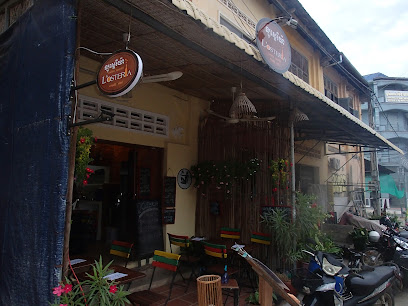
Tertúlia Restaurant Kampot
Discover Tertúlia Restaurant in Kampot for an unforgettable dining experience filled with authentic Portuguese flavors and warm hospitality.
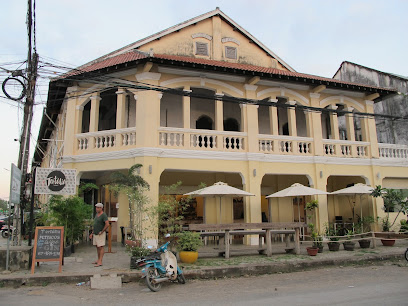
Kampot Seafood & Pepper/cooking class
Discover the essence of Cambodian cuisine at Kampot Seafood & Pepper with fresh seafood and engaging cooking classes.
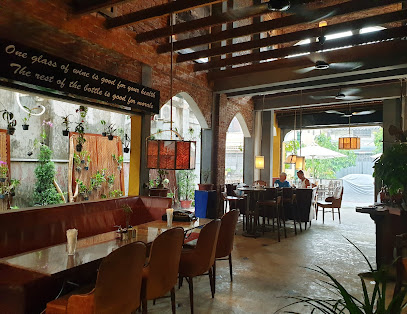
Rusty Keyhole
Experience authentic Cambodian cuisine at Rusty Keyhole in Krong Kampot - where every meal is a celebration of local flavors.
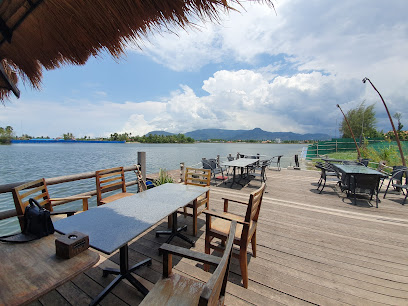
Artisans Kampot
Experience the perfect fusion of Khmer and French cuisine at Artisans Kampot, where every dish tells a story.
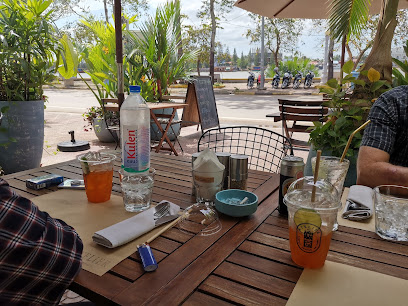
Vanna Restaurant & Bar
Discover Vanna Restaurant & Bar in Krong Kampot for an exquisite fusion of Western and Khmer flavors in a warm, welcoming atmosphere.
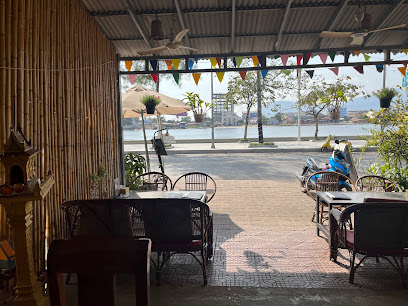
Twenty three bistro kampot
Experience the best of Cambodian flavors and international cuisine at Twenty Three Bistro in Krong Kampot.
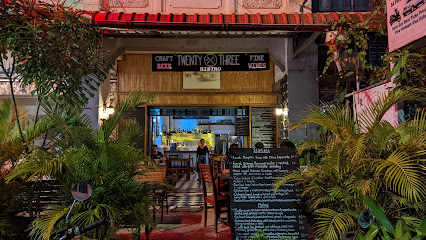
Ciao
Discover exquisite flavors at Ciao in Krong Kampot - where local ingredients meet innovative cuisine for an unforgettable dining experience.
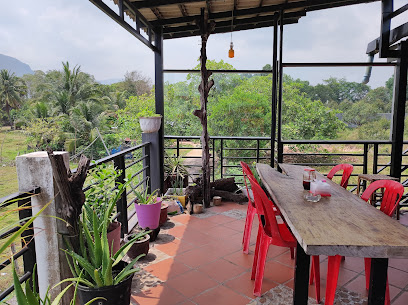
Lakerestaurant
Discover authentic Cambodian flavors at Lakerestaurant, known for its exquisite dishes and welcoming ambiance.

Monkey Republic Kampot Cafe, Bar & Kitchen
Discover delicious food and craft beer at Monkey Republic Kampot Cafe - your go-to spot for relaxation in Cambodia's scenic Kampot.
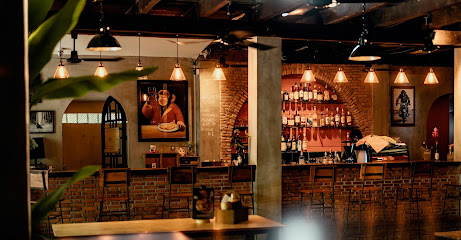
The lost kitchen
Experience authentic Greek cuisine at The Lost Kitchen in Cambodia - where every dish tells a story of tradition and flavor.
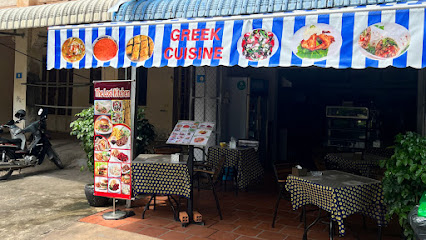
Max Bar & Kitchen
Savor authentic Italian cuisine at Max Bar & Kitchen in Krong Kampot – a culinary haven offering delicious dishes and warm hospitality.
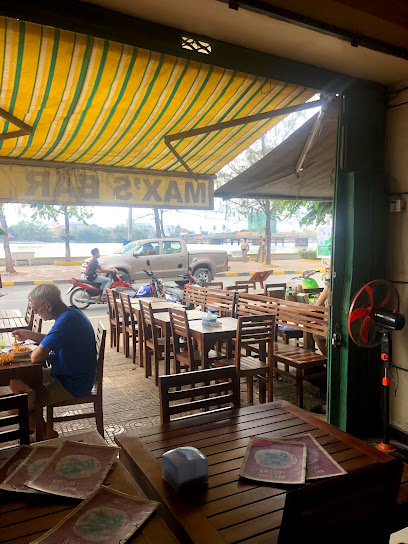
Markets, malls and hidden boutiques
Farm Link
Experience the rich flavors of Cambodian spices at Farm Link in Kampot, a must-visit spice store and tourist attraction.

Daily Meat
Experience local flavors at Daily Meat, Kampot's favorite grocery store offering fresh produce and quality meats.
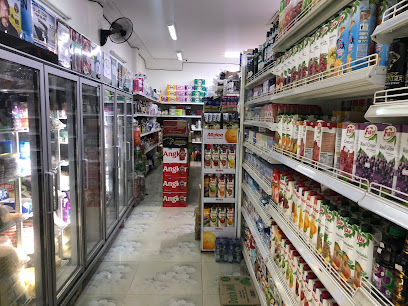
Tiny Kampot Pillows
Explore the vibrant world of handmade pillows and local crafts at Tiny Kampot Pillows in Krong Kampot, a unique shopping experience.

Kampot Souvenirs Kampot Pepper Shop
Explore the charm of Kampot Souvenirs Kampot Pepper Shop for authentic Cambodian gifts and world-renowned Kampot pepper.
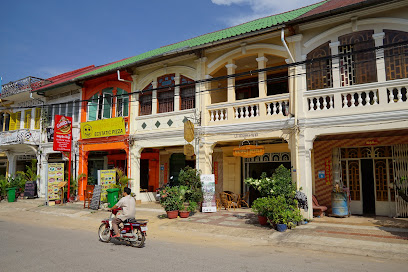
FairPlus Supermarket Kampot
Explore FairPlus Supermarket in Kampot for a delightful shopping experience with local products and international selections, perfect for every traveler.

Sakura Recycle Shop Japan Kampot
Explore the Sakura Recycle Shop in Kampot for unique thrifted finds and sustainable shopping experiences.
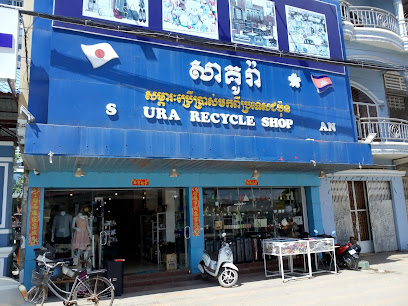
Lucky Express Supermarket Kampot
Discover a wide range of groceries and local delights at Lucky Express Supermarket in Kampot, your perfect shopping destination!
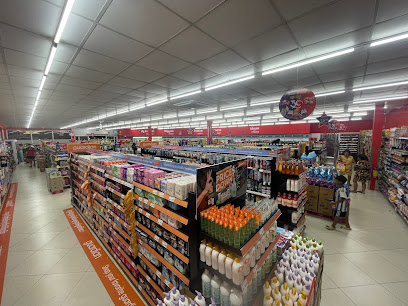
Brand INT Collection Kampot
Explore Kampot's vibrant fashion scene at Brand INT Collection, where local styles meet international trends for the perfect shopping experience.
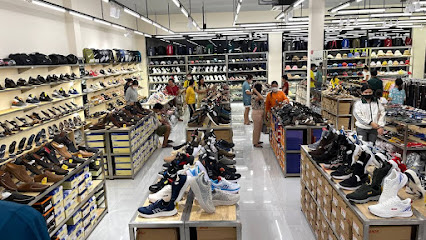
Kampot Orkide Boutique
Explore the exquisite craftsmanship and unique treasures at Kampot Orkide Boutique in Krong Kampot, where local culture meets elegance.
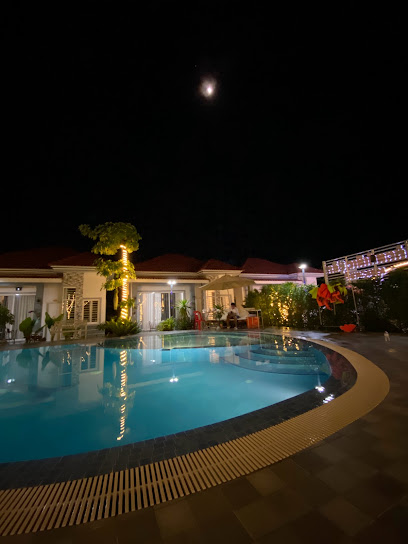
LG BrandShop Kampot
Explore the latest in electronics at LG BrandShop Kampot, your go-to destination for quality LG products in a friendly shopping atmosphere.
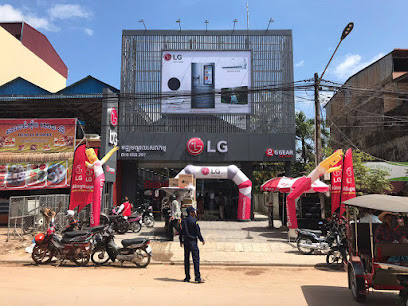
2900 riel shop
Explore the 2900 Riel Shop in Krong Kampot for local goods, unique souvenirs, and an authentic taste of Cambodian culture.
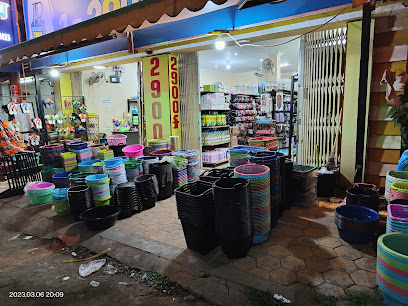
Kate Boutique
Discover Kate Boutique in Krong Kampot - your one-stop shop for premium baby products and accessories in a charming atmosphere.
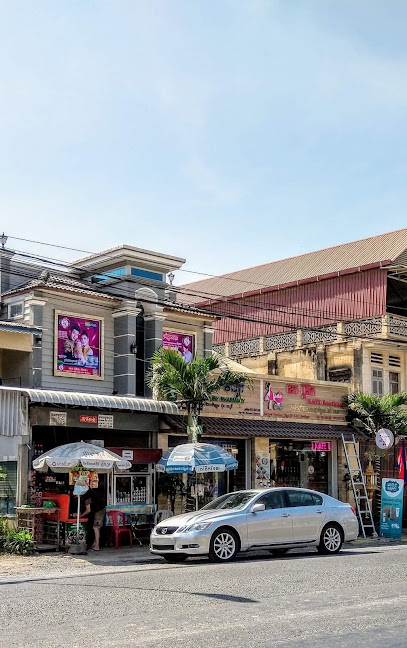
River Souvenirs
Discover the charm of Cambodia at River Souvenirs, where authentic craftsmanship meets vibrant culture in the heart of Krong Kampot.
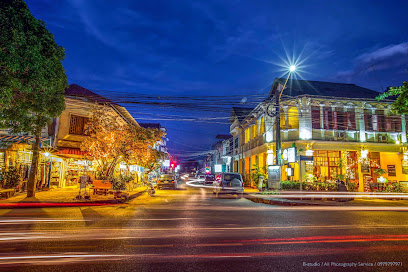
13 SEPTEMBER SHOP
Explore the vibrant fashion scene at 13 September Shop in Krong Kampot, a boutique offering unique styles and local craftsmanship for all tastes.
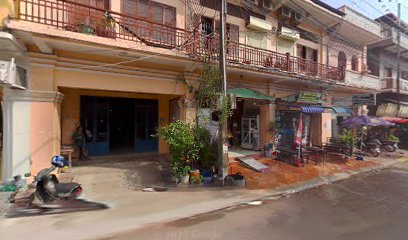
Kompot
Experience the vibrant atmosphere of Kompot's kite shop, where colorful kites and local culture come together for an unforgettable adventure.
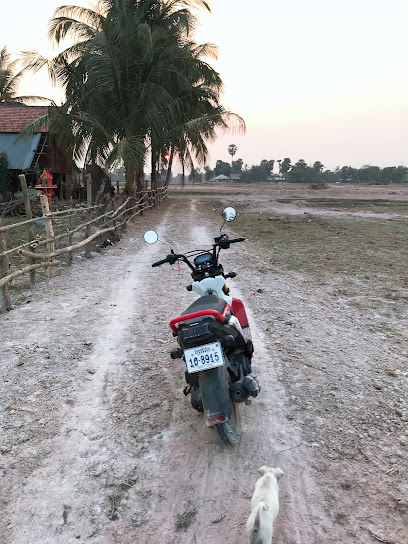
Essential bars & hidden hideouts
Oh Neil's Irish Bar
Discover the heart of Irish hospitality at Oh Neil's Irish Bar, where lively ambiance meets delicious cuisine on the scenic riverside of Kampot.
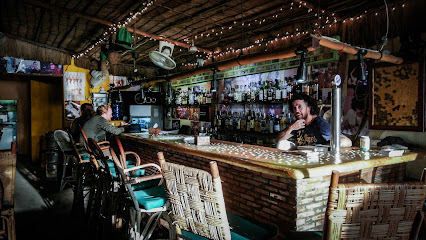
Rusty Keyhole Two
Experience the lively atmosphere of Rusty Keyhole Two, Krong Kampot’s beloved sports bar offering great drinks and a welcoming vibe for all.
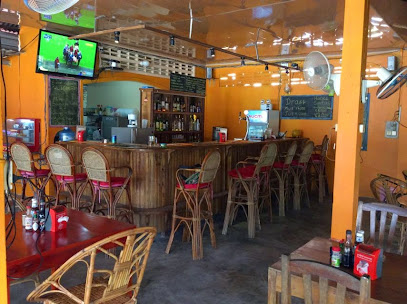
The Green Room - Kampot
Experience the vibrant atmosphere of The Green Room in Kampot, where local culture meets a lively pub scene.
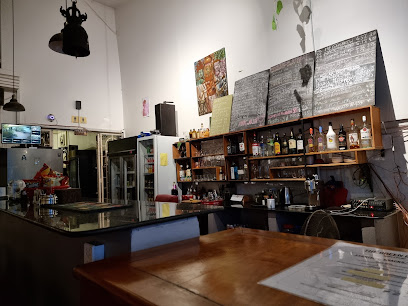
Nowhere
Experience the vibrant nightlife at Nowhere, a hidden bar in Krong Kampot, where local culture and friendly ambiance meet.
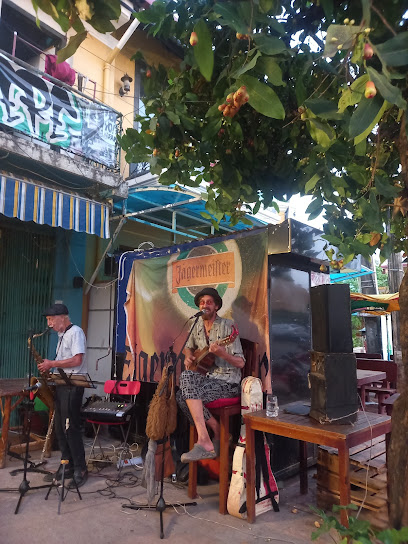
RINA PUB
Experience the lively atmosphere and friendly vibe of Rina Pub in Kampot, where great drinks and fun times await every night.
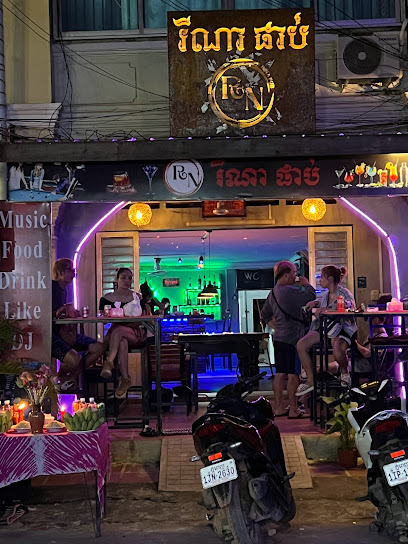
Top Cat Bar
Experience the vibrant nightlife at Top Cat Bar in Krong Kampot, offering a lively atmosphere, great drinks, and unforgettable memories.
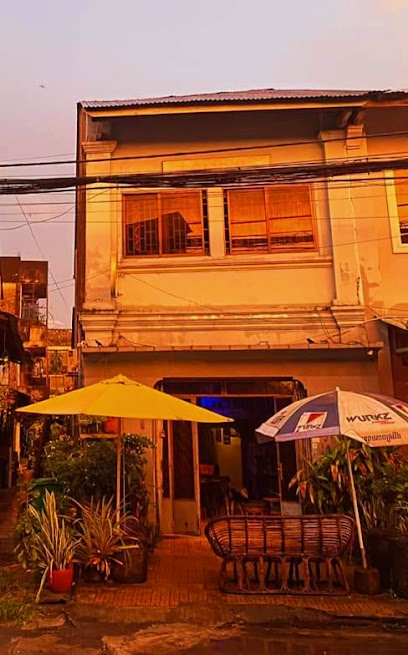
Bundy Bar
Experience the vibrant nightlife of Krong Kampot at Bundy Bar, where friendly faces and affordable drinks create unforgettable memories.
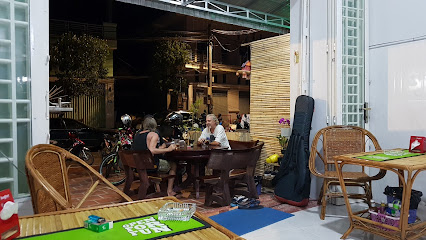
The Boys Riverside
Experience vibrant nightlife and riverside relaxation at The Boys Riverside in Kampot, where delicious food and drinks await.
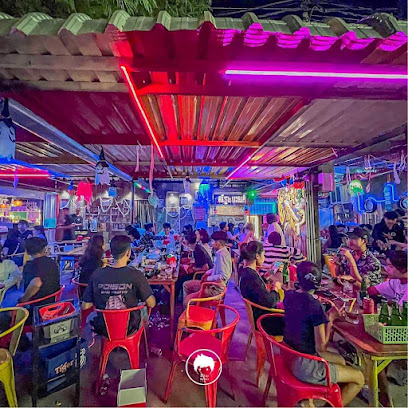
The Bay ឌឹបេ
Discover the perfect blend of relaxation and vibrant nightlife at The Bay, a premier bar in the heart of Krong Kampot, Cambodia.
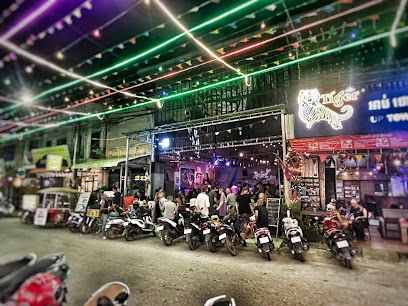
Up Town Bar
Experience the vibrant nightlife of Kampot at Up Town Bar, where refreshing drinks and lively ambiance await.
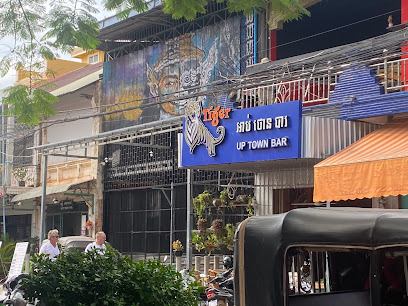
Cactus Kampot
Discover the vibrant nightlife of Krong Kampot at Cactus Kampot, where great drinks and a lively atmosphere await you.
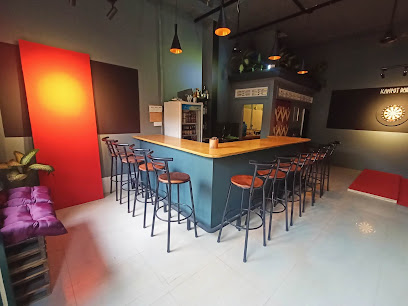
TopSpin
Experience the vibrant atmosphere of TopSpin in Kampot, where games, drinks, and fun converge for an unforgettable night out.
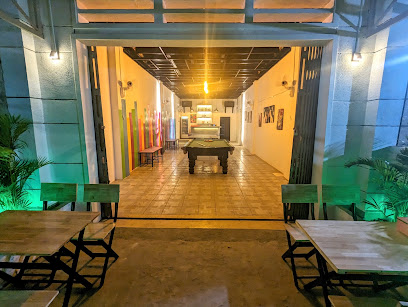
The Kraken
Experience the vibrant nightlife of Krong Kampot at The Kraken, where delicious drinks and friendly vibes await every visitor.
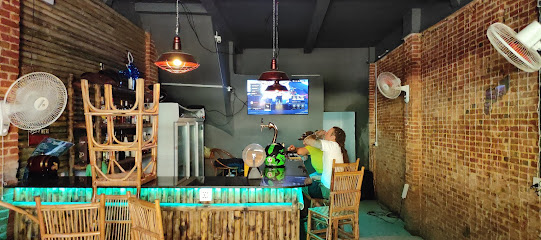
Joe's Bar
Discover the lively vibe of Joe's Bar in Krong Kampot, where refreshing drinks and a friendly atmosphere await every visitor.
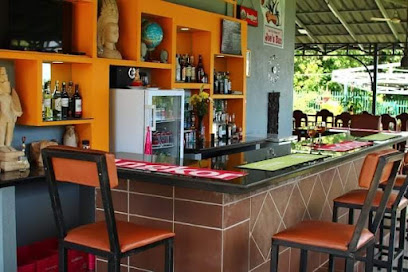
CoolGirl Bar
Discover the vibrant nightlife at CoolGirl Bar in Kampot, where cocktails, music, and great company await you in a lively atmosphere.
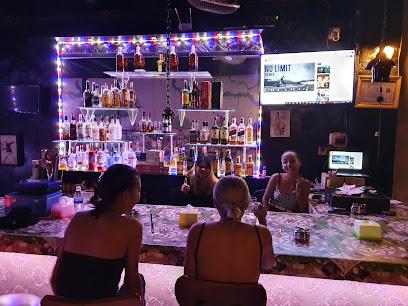
Local Phrases about Kampot Province
-
- Helloជំរាបលា
[chomraplea] - Goodbyeលាវលា
[lavyaplea] - Yesបាទ
[baat] - Noទេ
[te] - Please/You're welcomeសូម
[sourm] - Thank youអរគុណ
[arkun] - Excuse me/Sorryសូមស្រាម
[sourmsraam] - How are you?អ្នកសុខសប្បាយបានបំផុត?
[neaksoksabbaybunbomphot] - Fine. And you?ល្អបាន។ អ្នកទេ?
[laaban. neakte?] - Do you speak English?តើអ្នកនៅនាយខ្មែរទេ?
[teankeanynaykhmer te?] - I don't understandខ្ញុំមិនពាហទេ
[knhommpenphach te]
- Helloជំរាបលា
-
- I'd like to see the menu, pleaseខ្ញុំចង់មើលម៉ឺនុយសូម
[knhomchongmeulmenun sourm] - I don't eat meatខ្ញុំមិនបរិយាយសាច់
[knhommpenbraihsach] - Cheers!ជម្រាលផង
[chomreappong] - I would like to pay, pleaseខ្ញុំចង់បង់ប្រាក់សូម
[knhomchongbongbraiksourm]
- I'd like to see the menu, pleaseខ្ញុំចង់មើលម៉ឺនុយសូម
-
- Help!គាំងគាំង!
[kaamkaam] - Go away!បើបាន!
[beinbein] - Call the Police!ទូរទស្សន៍មកជួប!
[tortasornmakjup] - Call a doctor!ទូរព៌ក។
[topak] - I'm lostខ្ញុំវងបិតបាន។
[knhomvongbaetban] - I'm illខ្ញុំមានជំងឺ។
[knhommajchmung]
- Help!គាំងគាំង!
-
- I'd like to buy...ខ្ញុំចង់ទិញ...
[knhomchongtoon...] - I'm just lookingខ្ញុំសំរាប់បង្កើត
[knhomsomrapbongkaet] - How much is it?តើវាខ្លះទេ?
[tevaklhte?] - That's too expensiveវាគឺគិតសំរាប់ពិនិត។
[vekteksomrabpinhit] - Can you lower the price?តើអ្នកអាចបញ្ចូលតម្លៃបានទេ?
[teankeachbongcholthmlaibun te?]
- I'd like to buy...ខ្ញុំចង់ទិញ...
-
- What time is it?ពេលណានេះ?
[pelnea ney?] - It's one o'clockវាមួយនាទិច។
[vamuyneatech] - Half past (10)កន្លះទិច។
[knlahneatech] - Morningព្រឹក
[proek] - Afternoonល្ងាច
[leangchaa] - Eveningល្ងាច
[leangchaa] - Yesterdayម្សិល
[msul] - Todayថ្ងៃនេះ
[thainey] - Tomorrowស្អែក
[saek] - 11
[1] - 22
[2] - 33
[3] - 44
[4] - 55
[5] - 66
[6] - 77
[7] - 88
[8] - 99
[9] - 1010
[10]
- What time is it?ពេលណានេះ?
-
- Where's a/the...?នៅឆ្ងាញ់នេះ?
[naychnhaaneh?] - What's the address?អាសយាល៉ុបអ៊ិនសេស?
[asyalobinseh] - Can you show me (on the map)?តើអ្នកអាចបង្ហាញខ្ញុំនៅលើផែនទីបានទេ?
[teankeachbonghangknhomnaleapenhtei bun te?] - When's the next (bus)?នេះមួយរយបេ្រតដែល?
[neymuoyraaybaatdeul] - A ticket (to ....)សំបុ៏រត។
[sombot]
- Where's a/the...?នៅឆ្ងាញ់នេះ?
History of Kampot Province
-
The history of Kampot Province dates back to ancient times, with early settlements emerging in the pre-Angkorian era. Archaeological evidence suggests that the area was inhabited by the Funan Kingdom around the 1st century AD. These early societies were known for their complex irrigation systems and trade connections with India and China, laying the groundwork for Kampot's later development.
-
During the Angkorian period (9th to 15th centuries), Kampot Province became an important part of the Khmer Empire. The province's strategic location along the coast and its fertile lands made it a significant contributor to the empire's economy. Temples and ruins from this period, such as Phnom Chhnork, offer glimpses into the region's rich cultural heritage.
-
In the late 19th century, Kampot became a vital port under French colonial rule. The French influence is still evident today in the town's architecture, with colonial-era buildings and broad, tree-lined boulevards. The Bokor Hill Station, a mountain resort built by the French in the 1920s, stands as a testament to this period, offering panoramic views and a sense of historical grandeur.
-
After gaining independence from France in 1953, Kampot experienced significant changes. The province was affected by the Cambodian Civil War and the Khmer Rouge regime in the 1970s. Many residents suffered during this tumultuous period, and the region's infrastructure was heavily damaged. Despite these challenges, Kampot has since rebuilt and recovered, preserving its historical sites and cultural traditions.
-
Today, Kampot Province is experiencing a cultural renaissance. The town of Kampot has become a popular destination for tourists, known for its pepper plantations, salt fields, and vibrant arts scene. The annual Kampot Writers & Readers Festival celebrates the region's literary and artistic contributions, drawing visitors from around the world. This blend of historical richness and modern creativity makes Kampot a unique and compelling destination.
Kampot Province Essentials
-
Kampot Province is accessible from Phnom Penh, the capital of Cambodia, which is approximately 150 kilometers away. The most common way to get to Kampot is by bus or minivan, with several companies offering daily services. The journey typically takes around 3 to 4 hours. Alternatively, you can hire a private taxi for a more comfortable and direct trip. For those preferring a scenic route, the train service operated by Royal Railway Cambodia runs from Phnom Penh to Kampot, taking about 4.5 hours.
-
Within Kampot Province, transportation options include tuk-tuks, motorbike taxis, and rental scooters or bicycles. Tuk-tuks and motorbike taxis are readily available and are a convenient way to get around town. For more freedom, renting a scooter or bicycle allows you to explore at your own pace. Car rentals are also available but less common. Public buses connect Kampot with neighboring towns and cities, but schedules can be irregular.
-
The official currency in Cambodia is the Cambodian Riel (KHR), but US Dollars (USD) are widely accepted. Credit cards are accepted in larger hotels, restaurants, and some shops, but cash is king, especially in smaller establishments and rural areas. ATMs are available in Kampot town, dispensing both Riel and US Dollars. It is advisable to carry small denominations of cash for convenience.
-
Kampot is generally considered safe for tourists. However, standard travel precautions should be taken. Avoid walking alone late at night, especially in poorly lit areas. Petty theft, such as pickpocketing, can occur, so keep your valuables secure. Areas around the riverside and the night market can get crowded; stay vigilant. Kampot town is relatively safe, but it's advisable to avoid remote areas after dark.
-
In case of emergency, dial 117 for police assistance, 119 for medical emergencies, and 118 for fire services. Kampot has a local hospital and several clinics for medical needs. It is highly recommended to have travel insurance that covers health emergencies. Pharmacies in the town can provide over-the-counter medications. Always keep a copy of your identification and important contacts handy.
-
Fashion: Do dress modestly, especially when visiting religious sites. Avoid wearing revealing clothing. Religion: Do respect local customs and traditions. Remove your shoes and cover your head when entering pagodas. Public Transport: Do be respectful and give up your seat to elderly passengers. Don't eat or drink on public transport. Greetings: Do greet people with a respectful nod or a slight bow. A traditional greeting involves placing your palms together in a prayer-like gesture. Eating & Drinking: Do try local delicacies and accept food offerings graciously. Don't refuse hospitality, as it is considered impolite.
-
To experience Kampot like a local, visit the local markets, such as the Kampot Market, where you can buy fresh produce, local spices, and handmade goods. Engage with locals, as they are often friendly and willing to share stories about Kampot’s history and culture. Don’t miss a visit to the salt fields and pepper plantations, which are integral to Kampot’s economy. For a unique experience, take a sunset boat cruise on the Kampot River, offering stunning views of the surrounding landscape.
Trending Landmarks in Kampot Province
-
Bokor Hill Station
-
Preah Monivong Bokor National Park
-
La Plantation
-
Daung TE Kampot
-
Popokvil Waterfall
-
Kampot Night Market
-
Entanou Slide River Park
-
Wat Sampov Pram
-
Yellow Sun Hostel Kampot
-
Sothy's Pepper Farm
-
Mad Monkey Hostel Kampot
-
Karma Traders Kampot
-
Sabay Beach
-
Kampong Trach Mountain Park
-
Rusty Keyhole
Nearby Cities to Kampot Province
-
Things To Do in Kampot
-
Things To Do in Sihanoukville
-
Things To Do in Phu Quoc
-
Things To Do in Phnom Penh
-
Things To Do in Koh Rong
-
Things To Do in Can Tho
-
Things To Do in Koh Kong
-
Things To Do in Ho Chi Minh City
-
Things To Do in Kratie
-
Things To Do in Trat
-
Things To Do in Battambang
-
Things To Do in Siem Reap
-
Things To Do in Vung Tau
-
Things To Do in Rayong
-
Things To Do in Phan Thiet












